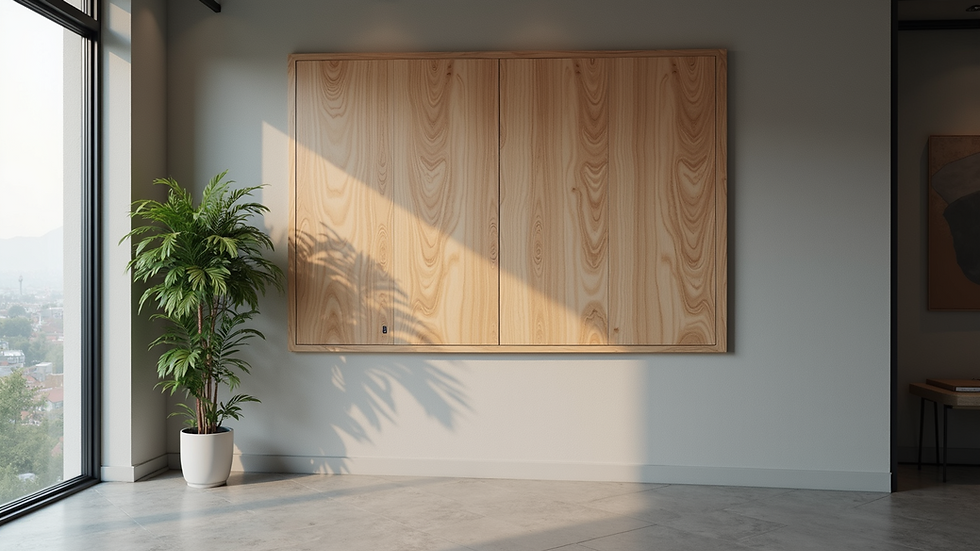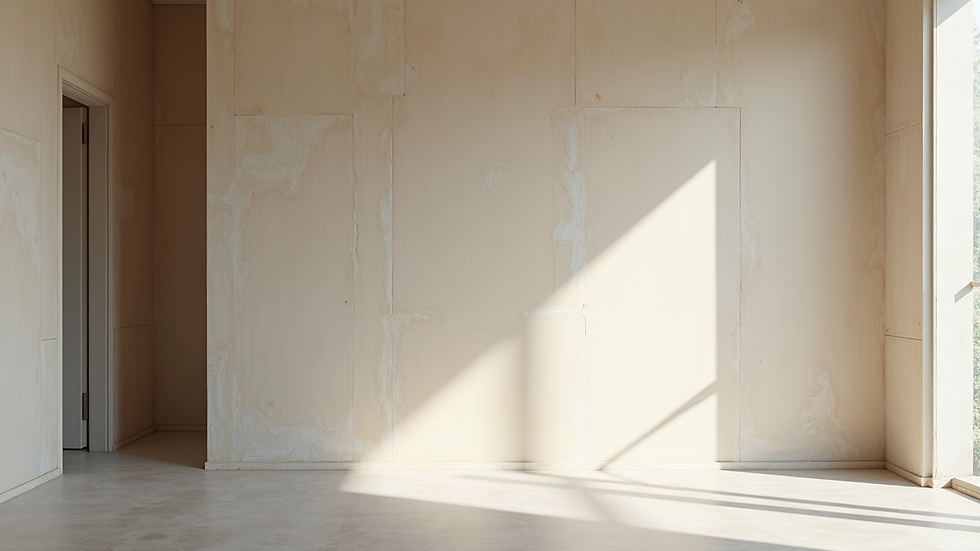Master Soundproofing Techniques for Any Space
- cristiancorsini

- Sep 21, 2025
- 4 min read
Creating a quiet and peaceful environment is essential for comfort, productivity, and well-being. Whether you live in a bustling city apartment, work in a noisy office, or want to enjoy your home theatre without distractions, mastering noise reduction techniques can transform your space. This guide will walk you through practical and effective methods to reduce unwanted sound and improve your acoustic environment.
Understanding Noise Reduction Techniques for Better Living
Noise reduction techniques involve strategies and materials designed to minimize sound transmission and absorption. These methods can be applied to walls, floors, ceilings, doors, and windows to block or absorb noise. The goal is to create a barrier that prevents sound waves from entering or leaving a room.
Some common noise sources include traffic, neighbours, appliances, and conversations. By identifying the main sources of noise in your space, you can choose the most appropriate solutions.
Key Noise Reduction Methods
Sealing gaps and cracks: Sound travels through even the smallest openings. Use weatherstripping, caulk, or acoustic sealant to close gaps around doors, windows, and walls.
Adding mass: Heavier materials block sound better. Consider adding drywall layers, mass-loaded vinyl, or dense insulation.
Decoupling surfaces: Creating a separation between walls or floors reduces vibration transmission. Techniques include resilient channels or double stud walls.
Absorbing sound: Soft materials like acoustic panels, carpets, and curtains absorb sound waves, reducing echo and reverberation.
Using soundproof windows and doors: Specialized products can significantly reduce noise infiltration.

Practical Noise Reduction Techniques for Different Spaces
Different rooms and buildings require tailored approaches to noise control. Here are some practical tips for common spaces:
Residential Spaces
Living rooms and bedrooms: Use thick curtains, rugs, and upholstered furniture to absorb sound. Seal door gaps with draft stoppers.
Home offices: Install bookshelves filled with books against walls to add mass and absorb sound. Consider a white noise machine to mask distractions.
Kitchens and bathrooms: Use rubber mats and soft-close doors to reduce noise from appliances and fixtures.
Commercial Spaces
Offices: Use acoustic ceiling tiles and partitions to reduce noise between workstations. Encourage the use of headphones and quiet zones.
Restaurants and cafes: Install sound-absorbing panels on walls and ceilings. Use soft furnishings and carpets to minimize noise reflection.
Studios and theatres: Employ decoupling techniques and heavy curtains to isolate sound. Use bass traps and diffusers for balanced acoustics.
Vehicles and Outdoor Areas
Cars: Add soundproof mats under carpets and inside doors. Use window seals to block wind noise.
Outdoor patios: Use outdoor rugs and plants to absorb sound. Install fences or screens to block noise from neighbours or traffic.

What is the most effective way to soundproof?
The most effective way to soundproof a space depends on the type of noise and the construction of the building. However, combining multiple methods usually yields the best results. Here are some top recommendations:
Identify the noise source: Understanding where the noise comes from helps target your efforts.
Add mass and density: Use materials like mass-loaded vinyl or extra drywall layers to block sound.
Seal all gaps: Even small cracks can let noise through, so airtight sealing is crucial.
Decouple structures: Prevent vibrations from passing through walls or floors by creating separation.
Absorb sound inside the room: Use acoustic panels, carpets, and curtains to reduce echo and improve sound quality.
For example, in a home theatre, combining double drywall with resilient channels, sealing doors, and adding thick curtains can create a near-silent environment. In an office, acoustic ceiling tiles and partitions combined with noise masking systems can significantly improve concentration.

How to Choose the Right Materials for Noise Control
Selecting the right materials is key to effective noise reduction. Here are some popular options and their benefits:
Acoustic foam panels: Lightweight and easy to install, ideal for absorbing mid to high frequencies.
Mass-loaded vinyl (MLV): Dense and flexible, excellent for blocking sound transmission.
Fiberglass insulation: Good for filling cavities and absorbing sound within walls.
Resilient channels: Metal strips that decouple drywall from framing, reducing vibration.
Soundproof curtains: Thick, heavy fabrics that absorb sound and block light.
Weatherstripping and door sweeps: Seal gaps around doors and windows to prevent noise leaks.
When choosing materials, consider the frequency of the noise you want to block. Low-frequency sounds like bass require heavier, denser materials, while high-frequency sounds can be absorbed by softer materials.
Tips for DIY Soundproofing Projects
You don’t always need professional help to improve your space’s acoustics. Here are some easy DIY tips:
Use rugs and carpets: Cover hard floors to reduce sound reflection.
Hang heavy curtains: Use blackout or soundproof curtains on windows and doors.
Seal gaps: Apply weatherstripping or caulk around windows, doors, and baseboards.
Add bookshelves: Fill them with books to add mass and absorb sound.
Create a soundproof door: Attach a door sweep and use draft stoppers.
Use furniture placement: Position sofas and chairs against shared walls to buffer noise.
For more advanced projects, consider installing additional drywall layers with resilient channels or adding acoustic panels. Always measure the room’s acoustics before and after to track improvements.
Explore Advanced soundproofing techniques for Ultimate Quiet
If you want to take your noise control to the next level, exploring professional-grade soundproofing techniques can make a huge difference. These include:
Double stud walls: Two separate wall frames with a gap in between to prevent sound transmission.
Green glue compound: A damping material applied between drywall layers to reduce vibration.
Acoustic decoupling clips: Used to isolate drywall from framing.
Soundproof windows: Double or triple-glazed windows with laminated glass.
Floating floors: Floors mounted on isolators to reduce impact noise.
These methods require more investment and expertise but provide superior noise reduction, especially in challenging environments.
Mastering noise reduction techniques can dramatically improve your quality of life. Whether you choose simple DIY fixes or advanced professional methods, creating a quieter space is achievable with the right knowledge and materials. Start by assessing your noise sources, then apply the strategies that best fit your needs and budget. Enjoy the peace and comfort of a well-soundproofed environment.




Comments